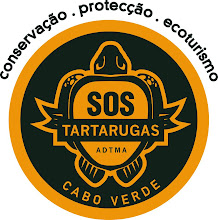This year we have also recorded five turtles from projects on other islands, something we always find particularly exciting and interesting as turtles tend to nest on the same or similar beaches year after year. However we are finding that here in Cape Verde turtles do wander and visit other islands. Peach is a fantastic example of this, 17 days after she was tagged on Sal, she had made her way to Boa Vista where she was nested on Boa Esperança beach.
Out of all the turtles tagged this season 38% have been seen again and 36.9% have been seen laying two or more nests.
Every year there’s always one turtle who makes herself known more than the others, this year it was Spaghetti who was seen six times and laid three nests.
Horizonte and Squirt were the turtles Rangers saw nesting the most this year, both turtles laid four nests. Horizonte was tagged by members of a workshop held in July and every nest she laid was on exactly the same section of beach! Squirt laid all her nests on Serra Negra, the busiest beach on Sal this year. Squirt was also seen by a group of guests on one of our 'Ranger Experience' tour.
This year we saved nine turtles through direct intervention, all were found turned upside down by hunters waiting to be killed. Seven of these turtles were saved in one exhausting week in August! Many of them were seen returning more than once this season completely undeterred by their earlier experiences.
Chase was seen four times including the time she was saved. She was seen nesting twice and her first nest was the day after she was saved.
Upsey, Eurildo and Francesca were all saved on the same evening. Both Upsey and Eurildo were seen nesting twice after. Francesca was wise and made sure she wasn’t seen again!
Two nests laid by saved turtles have hatched and both were amazingly successful with 90% of the eggs developing into little turtles.
All in all, another remarkable season! If you want to adopt and name one of our tagged turtles send an email to SOS Tartarugas

























